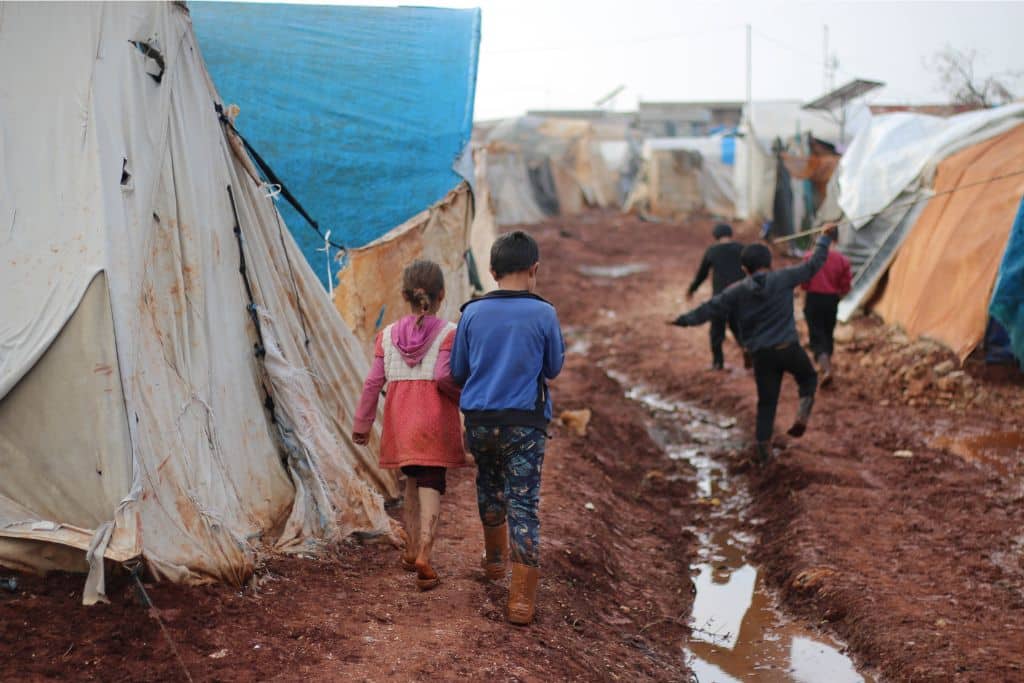Climate change is creating mass displacements due to extreme events like rising sea levels and swaths of agricultural land rendered useless because of erosion, pest invasions, land disputes and droughts. It is expected that tens of millions of people around the world will be forced to migrate to escape these environmental events, but what exactly are climate migrants and how can they be helped?
—
5 Facts About Climate Migrants
1. What Should We Call Them?
First on our list of facts about climate migrants, there is a lack of consensus on the term we should use to refer to people displaced by climate change. A research report published by the Othering & Belonging Institute at UC Berkeley defines these people as “climate refugees”- individuals who are forcibly displaced (within or beyond their nation-state boundaries) by short- and long-term natural disasters and environmental degradation precipitated or exacerbated by the climate crisis. However, the UN does not endorse the term “climate refugee” and considers “persons displaced in the context of disasters and climate change” to be more precise. Some groups use the terms climate migrant or ‘environmental migrant’ instead.
Climate events put pressure on people to leave their homes and livelihoods as they are rendered uninhabitable. From Pacific island states such as Kiribati and Tuvalu that are dealing with sea-level rise, to farmers in countries in West Africa who cannot cultivate their crops or raise livestock anymore because of drought and flooding, millions of people around the world will suffer the wrath of climate change.
2. Climate Migrants Are Not Legally Considered Refugees According to International Law
The term itself is merely descriptive, and it is not an official status that would protect people under international refugee law. “Refugee” is a legal term which has a very specific meaning centering on a “well-founded fear of being persecuted for reasons of race, religion, nationality, membership of a particular social group or political opinion” (Art. 1, 1951 Refugee Convention). According to this convention, people leaving their countries for reasons related to climate may not be considered refugees because it does not recognise the environment as a persecuting agent.
3. How Many Climate Refugees Are There?
Millions of people are expected to be displaced by the climate crisis as sea levels rise, swaths of land become uninhabitable and natural disasters become more severe and frequent. The World Bank’s 2018 Groundswell Report predicts that 143 million people in South Asia, Latin America, and Sub-Saharan Africa could become climate refugees by 2050.
The Environmental Justice Foundation reports that climate change has been displacing an average of 21.7 million people annually since 2008. It adds that 95% of human displacement happens in developing countries.
Further, a study by Climate Central shows that around 300 million people will be vulnerable to annual flooding by 2050, potentially reaching 480 million by 2100. 110 million people today live on land that is below the high tide line, and by 2050, more than 150 million people’s homes could be permanently below it.
However, no one knows for sure as it is generally difficult to ascertain the reasons for migration and there is a lack of official figures on within-country movement. Oftentimes places that experience climate stressors are also affected by conflict situations, political instability, low levels of economic development and human rights abuses, making it difficult to establish a direct causal link between the movement of people and the environment.
4. The Vulnerable Are Most Likely to Feel Pressure to Migrate
Countries with a combination of low adaptive capacities, vulnerable geographies and fragile ecosystems (such as small island states, the Sahel Belt and low-lying mega deltas) will face the toughest decision of whether to migrate. However, it is also often the poorest and most vulnerable who do not have the resources or capacity to leave their homes. The majority of environmentally-induced migrants are likely to come from rural areas, as their livelihoods often depend on climate sensitive sectors, such as agriculture and fishing. However, climate migration out of urban areas is also possible as sea level rise affects the densely populated coastal areas.
5. Climate Migrants Face a Lot of Challenges
Last on our list of facts about climate migrants; besides not being protected by international laws, climate migrants experience many other challenges. They experience greater political risks than other refugees who are able to receive protection under international law. Unlike “traditional” refugees, individuals who are climate refugees have a greater likelihood of being sent back to the homelands or forced into a refugee camp.
Whether you believe in climate change or not, the fact is that millions of people are being forced from their homes due to extreme weather events, and millions more will experience the same. As it is inevitable, countries need to create legislation that specifically cover and protect climate migrants.
Featured image by: Flickr
You might also like: Climate Refugees: When Home Becomes Uninhabitable

















